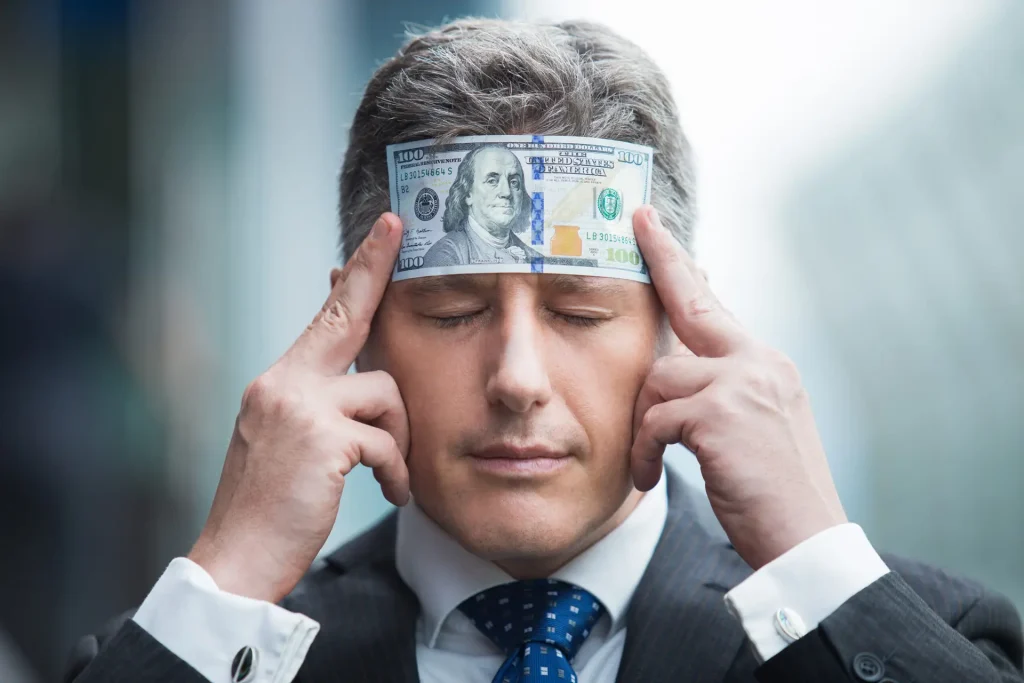The Dark Side of Wellness Culture You Never Hear About

The dark side of wellness culture is a topic many avoid discussing, yet it plays a crucial role in understanding the full picture behind the booming wellness industry. While wellness culture promotes health, happiness, and self-care, there are hidden negative aspects that can harm mental health, promote unrealistic standards, and even lead to financial exploitation. This article uncovers the shocking truths behind wellness culture, backed by case studies, expert insights, and practical advice.
What Is Wellness Culture?
Wellness culture is a lifestyle trend focused on physical, mental, and spiritual well-being. It includes practices like yoga, meditation, clean eating, fitness routines, and mindfulness. The culture encourages people to take control of their health and happiness through self-care rituals and products.
Unrealistic Standards and Pressure to Be Perfect
The dark side of wellness culture often involves unrealistic expectations. Social media platforms showcase flawless bodies, perfect diets, and endless positivity, creating pressure to conform. This can lead to feelings of failure, anxiety, and low self-esteem when individuals cannot meet these high standards.
Case Study – Social Media and Body Image
A 2023 study by the University of California found that 68% of young adults felt worse about their bodies after following wellness influencers online. Many reported increased anxiety and disordered eating behaviors linked to trying to emulate “perfect” wellness lifestyles.
Financial Exploitation and Wellness Consumerism
Wellness culture has become a multi-billion-dollar industry, often promoting expensive products, supplements, and retreats. The dark side of wellness culture includes aggressive marketing tactics that exploit people’s desire to be healthy, sometimes selling ineffective or unsafe products.

Case Study – The Supplement Industry
According to a 2024 report by Consumer Watchdog, over 40% of popular wellness supplements lack scientific backing. Consumers spend billions yearly on products that may have little to no benefit, highlighting the financial risks involved.
Mental Health Risks Hidden Behind Wellness
While wellness aims to improve mental health, the dark side of wellness culture can worsen it. The pressure to always be positive or “well” can invalidate real struggles, leading to stigma and isolation.
Toxic Positivity and Its Effects
Toxic positivity is the insistence on maintaining a positive mindset at all times, which can silence negative emotions. Experts warn this can prevent people from seeking help or acknowledging mental health issues.
Pros and Cons of Wellness Culture
| Pros | Cons |
|---|---|
| Encourages healthy habits | Promotes unrealistic body standards |
| Increases awareness of self-care | Can lead to financial exploitation |
| Supports mental well-being | May cause toxic positivity and stigma |
| Builds community and support | Risk of misinformation and unsafe products |
The Impact of Wellness Culture on Diversity and Inclusion

The wellness industry often lacks diversity, focusing on narrow beauty ideals and excluding marginalized groups. This exclusion contributes to feelings of alienation and limits access to wellness resources for many people.
Case Study – Wellness and Racial Representation
A 2022 survey revealed that only 15% of wellness advertisements featured people of color, despite diverse consumer demographics. This lack of representation affects inclusivity and accessibility.
How to Navigate the Dark Side of Wellness Culture
- Be critical of wellness claims: Research products and practices before investing.
- Focus on personal well-being, not perfection: Accept that wellness is a journey, not a destination.
- Seek professional advice: Consult healthcare providers for medical or mental health concerns.
- Limit social media exposure: Follow realistic and diverse wellness voices.
- Prioritize mental health: Allow space for all emotions, not just positivity.
Future of Wellness Culture: Moving Toward Balance
The wellness industry is beginning to recognize its flaws. There is a growing movement toward more inclusive, evidence-based, and balanced wellness practices that value mental health and realistic goals.
Wellness Culture and Environmental Impact: The Overlooked Connection
An often ignored aspect of the dark side of wellness culture is its environmental footprint. Many wellness products, from single-use detox teas to plastic-packaged supplements, contribute to waste and pollution. The demand for exotic “superfoods” can also lead to unsustainable farming practices and exploitation of natural resources.
Case Study – The Superfood Boom
The popularity of superfoods like acai berries and matcha has increased demand dramatically. This surge has led to deforestation and poor labor conditions in some producing countries, raising ethical and environmental concerns.
Wellness Culture and Social Isolation
Ironically, while wellness culture promotes community and connection, it can also foster social isolation. The emphasis on individual responsibility for health may lead people to withdraw from social support systems or feel alienated if they don’t “fit” the wellness mold.
Loneliness and Wellness Pressure
People who struggle to keep up with wellness trends may feel isolated or judged. This can worsen mental health, as social support is a key factor in emotional resilience.
The Role of Media in Shaping Wellness Culture
Media outlets and influencers play a huge role in shaping perceptions of wellness. The dark side of wellness culture is fueled by sensational headlines, celebrity endorsements, and viral trends that may lack scientific credibility.
Case Study – Viral Wellness Trends
Trends like “cleanse diets” or extreme detoxes often gain popularity through social media but lack medical support. These trends can cause harm or disappointment when results don’t match promises.
How to Build a Healthy Relationship with Wellness
- Set realistic goals: Focus on gradual improvements rather than perfection.
- Educate yourself: Learn about nutrition, exercise, and mental health from reliable sources.
- Practice self-compassion: Accept setbacks as part of the journey.
- Balance wellness with enjoyment: Include activities and foods that bring joy without guilt.
- Stay connected: Engage with supportive communities that value diversity and authenticity.
The Commercialization of Wellness: When Profit Overshadows Purpose
One of the most significant aspects of the dark side of wellness culture is its heavy commercialization. What began as a movement focused on holistic health and self-care has transformed into a lucrative industry worth billions of dollars. Companies often prioritize profit over genuine well-being, pushing products and services that promise quick fixes rather than sustainable health.
The Rise of Wellness Consumerism

From luxury retreats and expensive supplements to trendy fitness gadgets and skincare lines, the wellness market has exploded. This commercialization encourages consumerism under the guise of self-care, pressuring individuals to constantly buy the “latest” wellness product to stay healthy or happy.
Consequences of Commercialization
- Unsustainable spending: Many consumers spend large sums on wellness products with little evidence of benefit.
- Waste generation: The packaging and production of wellness goods contribute to environmental degradation.
- Exclusion: High costs make wellness inaccessible to many, creating a divide between those who can afford “wellness” and those who cannot.
Wellness Culture and Eating Disorders: A Hidden Epidemic
The emphasis on clean eating, detoxing, and dieting within wellness culture can inadvertently contribute to disordered eating patterns. The dark side of wellness culture includes the normalization of restrictive diets and obsessive behaviors that can escalate into eating disorders.
How Wellness Messaging Can Trigger Eating Disorders
- Moralizing food: Labeling foods as “good” or “bad” can create guilt and anxiety around eating.
- Extreme detoxes and cleanses: Promoted as necessary for health, these can encourage unhealthy fasting or purging behaviors.
- Social media influence: Constant exposure to idealized body images and diet trends can increase body dissatisfaction.
Case Study – Rise in Orthorexia Nervosa
Orthorexia nervosa, an obsession with “healthy” or “pure” eating, has become more common. A 2023 study found that 35% of young adults engaging heavily with wellness content reported symptoms consistent with orthorexia, highlighting a serious mental health risk.
The Wellness Industry and Lack of Regulation: A Risky Landscape
Another critical issue within the dark side of wellness culture is the lack of regulation. Many wellness products and services are not subject to the same rigorous testing and approval as pharmaceuticals or medical treatments.
Risks of Unregulated Products
- False claims: Products may promise benefits without scientific proof.
- Safety concerns: Some supplements contain harmful ingredients or contaminants.
- Delayed medical treatment: People may choose wellness products over proven medical care, risking their health.
Regulatory Challenges
Regulatory bodies struggle to keep pace with the fast-growing wellness market, leaving consumers vulnerable to misinformation and unsafe products.
Wellness Culture and Gender: The Pressure on Women
Wellness culture often places disproportionate pressure on women to achieve idealized standards of health, beauty, and behavior. This gendered expectation is a significant part of the dark side of wellness culture.
How Women Are Targeted
- Marketing often focuses on women, emphasizing weight loss, flawless skin, and emotional balance.
- Women report higher rates of body dissatisfaction and stress related to wellness ideals.
- The “wellness woman” archetype can reinforce traditional gender roles and unrealistic expectations.
Psychological Impact
These pressures contribute to anxiety, depression, and lowered self-esteem among women, who may feel they must constantly improve themselves to be accepted.
Wellness Culture and Cultural Appropriation: Ethical Concerns
The global wellness industry sometimes borrows spiritual and cultural practices without respect or understanding, leading to cultural appropriation. This is another troubling aspect of the dark side of wellness culture.
Examples of Appropriation
- Commercializing indigenous healing rituals without credit or benefit to the originating communities.
- Using sacred symbols or practices as trendy commodities.
- Ignoring the cultural significance and context of wellness traditions.
Impact on Communities
Cultural appropriation can dilute the meaning of traditional practices and exploit marginalized groups, raising ethical questions about the wellness industry’s responsibility.
The Role of Technology in Wellness: Benefits and Drawbacks
Technology has transformed wellness, offering apps for meditation, fitness tracking, and virtual therapy. However, the dark side of wellness culture includes over-reliance on technology, privacy concerns, and digital burnout.
Benefits of Wellness Technology
- Increased accessibility to wellness resources.
- Personalized health tracking and motivation.
- Support communities and professional guidance online.
Drawbacks and Risks
- Data privacy issues with health apps.
- Screen fatigue and reduced real-world social interaction.
- Overemphasis on metrics leading to obsession and stress.
How to Foster a Healthier, More Inclusive Wellness Culture
Addressing the dark side of wellness culture requires collective effort from consumers, industry leaders, and policymakers.
Key Steps Forward
- Promote evidence-based wellness: Encourage practices supported by science.
- Increase diversity and representation: Make wellness accessible and welcoming to all.
- Encourage transparency: Companies should disclose product ingredients and research.
- Support mental health: Normalize a full range of emotions and reduce stigma.
- Educate consumers: Provide tools to critically evaluate wellness information.
Conclusion
The dark side of wellness culture reveals that behind the glossy images and motivational quotes, there are real risks and challenges. Awareness of these issues helps individuals make smarter choices and promotes a healthier, more inclusive wellness movement. By embracing balance and critical thinking, you can enjoy the benefits of wellness culture while avoiding its pitfalls.





